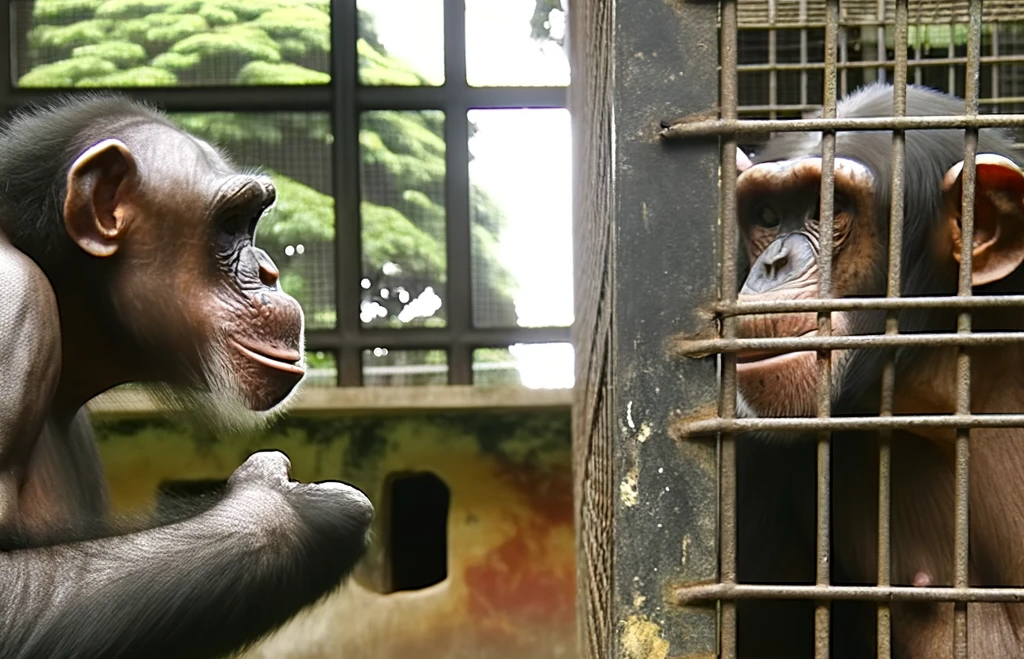In 1996, I had the unique opportunity to be a part of a compelling research study at the Language Research Center, focusing on exploring the Theory of Mind in chimpanzees. Guided by Dr. Michael Tomasello, a pioneer in comparative psychology, the study sought to explore the communicative abilities and social cognition of chimpanzees. Dr. Tomasello’s extensive work has provided invaluable insights into the evolutionary roots of cooperation, communication, and cognition in both great apes and humans.
The experiment I assisted with was centered around understanding whether a chimpanzee, knowledgeable about the location of hidden food, would communicate this information to a peer who could retrieve it but was unaware of its location. My role as a temporary assistant involved setting up the experiment, observing the chimpanzees’ interactions, and collecting data.
This research provided fascinating insights into whether non-human primates possess the ability to understand and communicate about others’ mental states, offering a window into the evolutionary origins of the human Theory of Mind. Research like this was a stepping stone in the broader exploration of primate cognition and behavior, contributing to our growing understanding of the mental lives of other species.
Theory of Mind (ToM) is a foundational aspect of social cognition that refers to the ability to attribute mental states such as beliefs, desires, intentions, and knowledge to oneself and others. It allows for the understanding that others have thoughts, feelings, and perspectives that may be different from one’s own. ToM is crucial for navigating complex social interactions, enabling empathy, cooperation, and communication. In essence, it allows individuals to predict and interpret the behavior of others by understanding their mental states. Research into Theory of Mind in non-human animals, particularly primates, seeks to uncover the evolutionary origins of this ability, providing insights into the development of sophisticated social understanding across species.
While my career didn’t ultimately focus on primate cognition, this experience at the Language Research Center has had a lasting impact on my perspective. Working at the Language Research Center was one of the catalysts for my current interest and exploration into consciousness, inspiring me to delve deeper into understanding the myriad ways in which life is interconnected. This chapter, though brief, has been instrumental in fueling my ongoing journey into researching the enigma of consciousness and the intricate tapestry that binds all forms of life.

